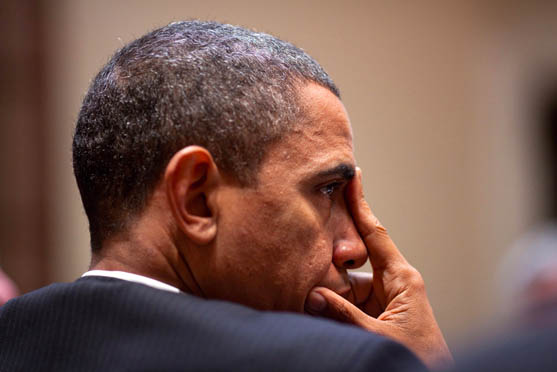The complex mechanism of America’s mid-term vote is either a constitutional marvel or a disaster.

In America, general elections are held every four years. In the course of these voters elect an entirely new House of Representatives (often simply referred to as the House), part of the Senate, the President and a number of state governors.
Between one general election and the next are the so-called mid-term elections, when voters cast their ballots to once again renew the entire House of Representatives (where terms are limited to two years) and those Senate seats that were not due for re-election during the general elections (as senatorial terms last six years).
Along with the general and mid-term elections there are further state elections to appoint state assemblies and governors. Therefore, not counting party primaries, the US electorate has an important appointment at the polls every two years.
The mid-term election phenomenon in the US came again to the fore in the political debate in 1994 – during Bill Clinton’s first term – when Republicans won control over both houses of Congress for the first time in 40 years. The outcome of mid-term elections is not necessarily determined by a president’s popu- I larity. According to some scholars, these elections tend primarily to punish the party more than the incumbent in the White House. It has been noted that a president’s popularity levels more often than not hurt rather than help his party.
In the US, the yardstick used to assess the result of mid-term elections is based less on the seats won by a single party, and more on how many seats the president’s party loses. With the exception of Franklin Roosevelt in 1934 and Clinton in 1998, during second terms the president’s party has always emerged the loser in these rounds.
Some scholars feel that the utility of mid-term elections is to link economic and political cycles by balancing the different economic agendas that the two opposing factions are often thought to represent within the country: economic incentives (Democrats) and inflation control (Republicans).
Another school of thought considers mid-term elections as yet another example of checks and balances, a tool that has evolved over time as a means for overseeing the Executive, curtailing the president’s party and forcing policy changes. However, the checks-and-balances system has led to a stalemate that hinders legislative output. It’s hardly surprising then that Barack Obama’s complex healthcare system reform is encountering numerous difficulties in being implemented, seeing as how the country’s legislative and executive branches are at odds with one another.
If one analyses the US elections over a 100- year period, from 1894 to 1994, it transpires that Congress becomes much less productive and more contentious just after mid-term elections. When all types of laws are taken into account, legislative output drops by 5%. However, if we restrict our observation only to those laws that are considered particularly important, since WWII legislative output dropped by 27% in these circumstances.
Further, in the wake of the mid-term elections, the success of what is known as veto override – Congress’ power to pass a bill over a presidential veto, which calls for a two-thirds vote in both houses – increases exponentially, from 26% to 42% (considering data from 1896 onwards).
That said, the defeat Obama suffered in 2010 was the worst since WWII. Mindful of that result, the President is now doing his utmost to support Democratic congressional candidates, by stressing the difficulty of tabling a constructive dialogue with the opposition and the ensuing impossibility of carrying out governmental prerogatives.
In the second week of September 2014, President Obama’s popularity rating stood at 41%. By comparison, during the second year of their second terms, the polls had George Bush and Bill Clinton at 42% and 64%, respectively. Obama was last seen with a rating of over 50% in December of 2012, just after his re-election, while for a 60% rating one has to go back to 2009, during his first year of presidency.
The mid-term elections will take place this 4 November, and will concern 36 of the 100 seats in the Senate, 21 of which are currently held by Democrats and 15 by Republicans; whereas all seats in the House of Representatives are up for renewal.
According to current forecasts, the Republicans have a lead in the Senate, but no clear majority, while their hold on the House of Representatives is secure.
There is a feeling that even the American democratic model is in the throes of a structural crisis. In Europe, the decision-making paralysis is linked to the non-linear development of European institutions while in the US the aforementioned historical factors prove how difficult it is to govern with a Congress in opposition – even for the most charming and visionary of presidents.
Perhaps the courage must be found to introduce a few adjustments, such as a reduction of the number of seats to be renewed during the mid-term elections (one could for example decide to renew just half of the House of Representatives), in order to recalibrate political power without changing governing majorities.
This is a time of reforms for everyone, especially if the West wants to once again be the leading model for those societies (I refer above all to the Middle East and North Africa) that are struggling to achieve their own self-determination and the introduction of democratic representation.
In America, general elections are held every four years. In the course of these voters elect an entirely new House of Representatives (often simply referred to as the House), part of the Senate, the President and a number of state governors.






